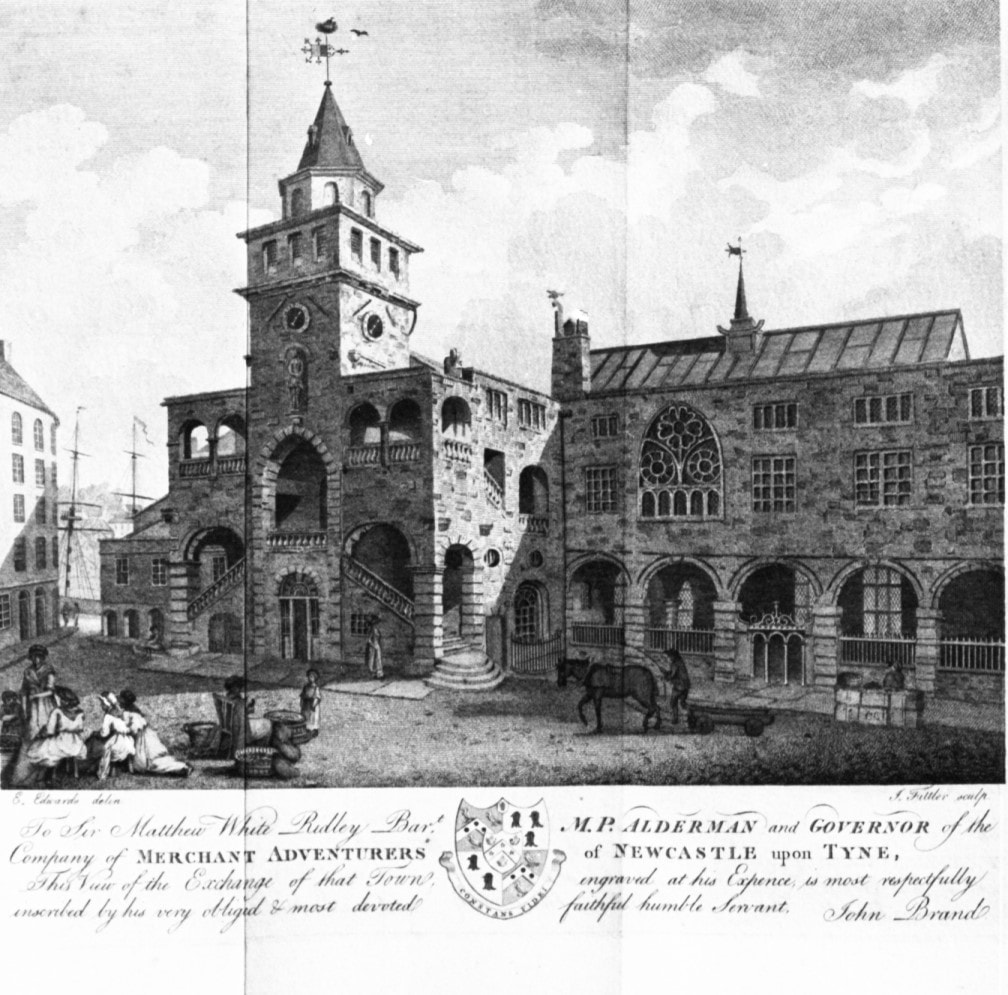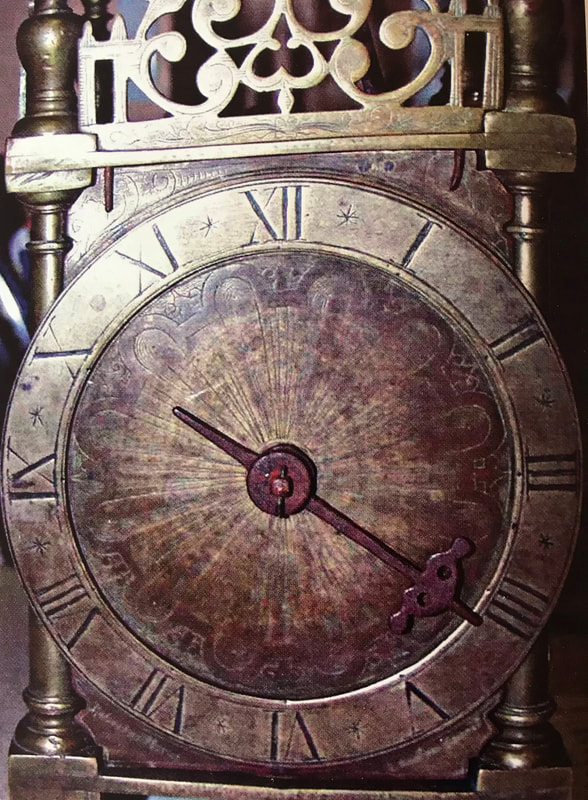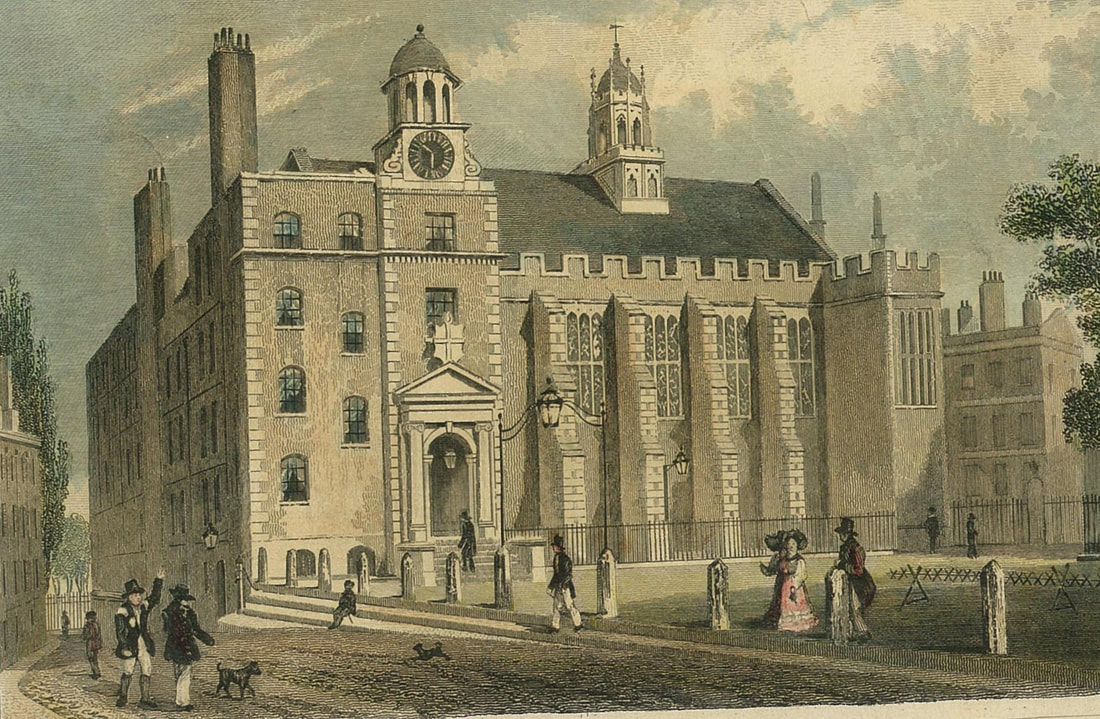|
When I wrote “Early Clock and Watchmakers of the Blacksmiths’ Company” and described the effects of the plague on the population at different times in our history, I never dreamt that we would be experiencing a pandemic similar to what the clock and watchmakers experienced in 16th and 17th centuries. The inhabitants of the towns and cities of England experienced repeated attacks of the Plague. We first hear of John Harvie, a London trained clockmaker, working in Newcastle towards the end of the 16th century. He made a clock for the old Exchange, or Townhall on the Sandhill, Newcastle in 1586. (See Fig. 1) By the time Harvie had his daughter Jane baptised at St Nicholas Church in Feb 1588/9 he must have been one of the leading figures in the Town, because the Sherriff of Newcastle, Robert Edon, stood as godfather to John’s daughter, together with other local notaries. Later in the summer of 1589 an epidemic of the Plague hit Newcastle. John Harvie must have left the Town in a hurry, which was the usual reaction of craftsmen and the more affluent inhabitants at that time. Harvie may have gone somewhere else at that time but he eventually returned to London. He died in St Botolph Parish, Aldersgate in 1602.
In 1636 when Newcastle was subjected to another epidemic of the plague the whole country felt the repercussions; there were shortages of coal in London, as well as salt from the Tyne. The ships which normally carried goods from Newcastle were refusing to call into the Tyne in case they carried the disease back with them. The Bailiffs of Great Yarmouth were petitioning for leave to buy salt from Scotland “ because the sickness is so at Newcastle and Shields as none dare adventure to fetch any”. The salt pans were situated near the mouth of the River Tyne, near North Shields. On occasions it was difficult to see up the river because the steam and smoke from the heated salt pans was so dense. The death toll in Newcastle from the plague of 1636 was 5631 which represented almost 47 percent of the population of about 12000.
The plague was prevalent in London on many occasions but the epidemic of 1665 stands out as one of the worst attacks. A number of clockmakers and their families were affected. Ahasuerus Fromanteel’s family was badly affected in 1665. His wife Sarah, his youngest son Daniel and his brother John, as well as several of his workforce all died. The rest of his family left London but the disease followed them to Colchester, so they went to Norwich. The Accounts of the Blacksmiths’ Company (BC) tell us that in September 1665 “ Paid to the Master of the Pest House, Sedan Men, and other charges about getting George Palmer into the Pest House £4-7-3”. The company were paying for George Palmer to be nursed when he contracted the plague. This was a huge amount of money, more than Palmer would have earned in a year. George Palmer had been apprenticed to the clockmaker, William Woodfeild in 1626 and freed in 1634. Palmer was working in his own workshop by 1636 when he bound his first of seven apprentices, binding his last apprentice in 1661. Only one of his apprentices, Thomas Bennett, was freed, in 1662. George Palmer must have been unable to work and was destitute by 1665 when the company had to pay for his last few days. Nothing more is heard of George Palmer so we must assume he died. Approximately 14 percent of the London population died of the plague in 1665. John Warfeild, one of the leading watchmakers of the 17th century who had his workshop in Fleet Street, is believed to have died from the plague in November 1665. John Warfeild had been apprenticed to Richard Craile on 24th April 1629 and was freed in 1637. John married Abigall Normington in 1638 and their son Alexander was baptised at St Dunstan in the West, Fleet Street, on 13th June 1639. John bound 10 apprentices between 1638-1662, seven of whom were freed including his son Alexander. Alexander was apprenticed to his father in November 1655 but he did not take his freedom of the BC until 1687. Alexander worked for his father until John died in November 1665; he then left London in a hurry and settled in West Wycombe, where his son Alexander was baptised in 1668. Alexander must have returned to London about 1675 and bound apprentices in the Clockmakers’ Company. Alexander took his freedom of the BC in 1687 in order to bind another apprentice Thomas Furnace on the same day in 1687 who was freed by Alexander’s widow Elizabeth in July 1694. Alexander having died in October 1688. The plague in London was a big tragedy but only a year later the City suffered an even greater catastrophe when the Fire of London broke out in September 1666 and destroyed most of the buildings in the City. 80 Churches were damaged or destroyed, many of the companies lost their halls, including the BC who not only lost their hall but all their adjoining properties too. Many of the clockmakers lost their premises in the fire, so that trade was almost at a standstill. Only those clockmakers working in Southwark, south of the river escaped the fire. The Temple church just off Fleet Street escaped the fire, as did the hall of the Middle Temple Society, who ordered a new clock from William Clement in 1667 which he installed in September 1667. (Fig 3. Middle Temple Hall c. 1815). It took a number of years to rebuild the damaged buildings in the Capital. Most of the damaged churches were replaced with new buildings financed by the taxes levied on the coal supplied by the merchants of Newcastle to London. Clock and watchmaking excelled after these two disasters. The period up to the end of the century was one of the finest in the history of clock and watchmaking.
For more stories about some of the leading clock and watchmakers of the 16th to 18th Centuries, as well as more information about the London Guilds and the relationship between the Clockmakers' Company and the Blacksmiths' Company, please do consider purchasing a copy of Early clock and watchmakers of the Blacksmiths' Company
0 Comments
Leave a Reply. |
AuthorKeith Bates is an amateur horologist who has been researching clocks, watches and chronometers and their makers for over 30 years. Archives
August 2023
Categories
All
|




 RSS Feed
RSS Feed